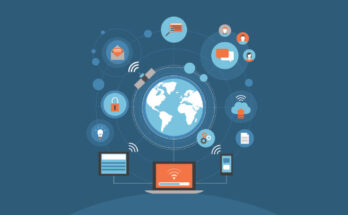Business online
E-business, also known as “digital business,” is how business is done on the Internet.
These e-business tasks include buying and selling goods and services, as well as taking care of customers.
dealing with payments and production control;
doing business with partners;
sharing information, running computerized job listings, hiring people, and more.
E-business can incorporate various capabilities and offerings.
They range from the creation of intranets and extranets to the distribution of e-products over the internet via software providers.
Today, as organisations constantly reconsider their corporations in terms of the net—specifically,
the net’s availability, attainment, and ever-converting abilities—
-they’re carrying out e-business to shop for components and components from different groups,
collaborate on income promotions, and conduct joint research.
The rise of e-business in recent years has given rise to new business requirements.
Clients expect businesses to provide self-service options for carrying out transactions;
they expect personalised experiences;
and they expect fast, consistent interactions.
On the regulatory front,
new legal guidelines and excellent practises for preserving digital information were instated.
As e-trade accelerated,
groups have followed stringent protection protocols and tools,
consisting of encryption and virtual certificates,
to guard against hackers, fraud, and theft.
E-business version
IBM became one of the first corporations to use the term “e-business”
when, in October 1997,
it launched a thematic marketing campaign to address the confusion many customers had about internet-based corporations.
The employer spent approximately $500 million on a marketing and advertising campaign
to illustrate the fee of the e-business version and to reveal that IBM had the
“talent, the offerings, and the goods
to assist clients seize the advantages of this new manner of doing business,
” in step with the employer website.
By 2000, IBM’s e-business sales had grown to more than $88 billion,
up from $64.4 billion in 1994, and internet profits had almost tripled.
There are numerous kinds of e-business fashion.
In the business-to-purchaser (B2C) version,
dealers provide services and products without delay to clients online,
and the consumer purchases them through the net.
Under the business-to-business (B2B) version,
Groups use the net to conduct transactions with one another.
B2B transactions usually involve more than one online transaction at each step of the delivery chain, which is different from B2C transactions.
The buyer-to-business (C2B) model is a type of e-business where customers set their own prices and orders for goods and services.
Reverse online auctions are examples of C2B e-business fashions,
as are airline price tag websites, like Priceline.
Under the purchaser-to-purchaser (C2C) e-business version,
Through online marketplaces like eBay that are run by a third party, clients are both buyers and sellers.
These C2C e-commerce clothing sales are made possible by fees paid by private advertisers.
charging for memberships and subscriptions and getting transaction fees.
Examples
E-corporations include both older companies that have changed themselves for the virtual age and newer companies that haven’t been around as long.
Born in the virtual world.
Gartner, a company that gives advice, says that these companies were founded after 1995 and have
“running models and skills that are mostly based on using information from the Internet and virtual technology as a core competency.”
The most notable top-notch e-business instance is Amazon,
which, as the largest e-trade market in the world,
and biggest online business by sales, has used its e-business model to shake up a number of industries.
from books to grocery stores.
Uber and Lyft are also examples of built-up companies that connect drivers with people who need rides.
Uber Eats, Uber’s meal ordering and transport platform released in 2014,
is an instance of ways an e-business can increase within the virtual age.
Travel websites like Expedia, Travelocity, and TripAdvisor that allow clients to research,
plan and book all or parts of their trips based on their own personal preferences.
made up of price,
Customer ratings, places, and other things are also examples of e-business models.
Schindler Group, a company that has been making elevators since 1874 and is based in Switzerland,
is an example of how a traditional company is adding e-business to its operations.
Because it uses IoT and other virtual services to change goods and services,
It offers internet and mobility services through elevators and escalators.
The Benefits of E-Commerce
E-business has changed a lot about how businesses and nonprofits work.
government organizations and other organizations like them—
-operate, allowing them to be more productive, lower costs,
and move around faster.
For instance, digital invoicing, computerised billing,
and virtual charge structures make it so employees don’t have to spend as much time on these tasks.
which many companies used to do by hand not too long ago.
Because of the time saved,
Companies can either hire less people or use their time to do tasks that pay more.
Also, these virtual structures cut down on the time between billing and invoicing.
So, the business’s coin flow will be better.
Electronic verbal exchange structures, consisting of electronic mail, video conferencing,
and online collaboration tools that take advantage of the way social media works,
Also, increase productivity by reducing the time between questions and answers.
That’s right whether the conversation is between employees, between employees and outside business partners, or between employees and clients.
The extended velocity additionally results in quicker decision-making,
making groups more flexible and aware of what stakeholders want and what the market needs in general.
Electronic communication systems also save money because they don’t have to,
In some cases, workers travel to work together and make the workplace more open.
By making it easier for people in any position to work together,
in any branch, no matter where they are physically located, to give ideas.
The virtual structures that power e-business can also enlarge an organization’s reach past its brick-and-mortar walls.
Cloud-based total business applications enable employees to work from home and other remote locations,
Such as customer websites.
Similarly,
Cloud-based programs and the fact that the internet is always on make it possible to do business around the clock and around the world.
letting even one-person businesses and small companies do business all over the world.
Digital structures, and especially rising technology consisting of system getting to know and synthetic intelligence,
have also made it easier, faster, and more effective to do many e-business tasks, such as archiving data and looking at stored data to find insights.
Recording monetary transactions, and connecting with clients with personalised messaging.
More importantly, though, the rise of better e-commerce software and services has given businesses new ways to do business.
consisting of email marketing, and found new ways to promote their products and services.
being made up of online shops.
E-trade software has enabled the introduction of completely new business fashions,
eBay’s ability to make money from buyer-to-buyer and business-to-buyer sales, as well as social networking sites like Facebook.
Shopify is an e-commerce platform that lets people set up online stores.
by giving them the infrastructure and e-commerce software they need to sell their own goods.






